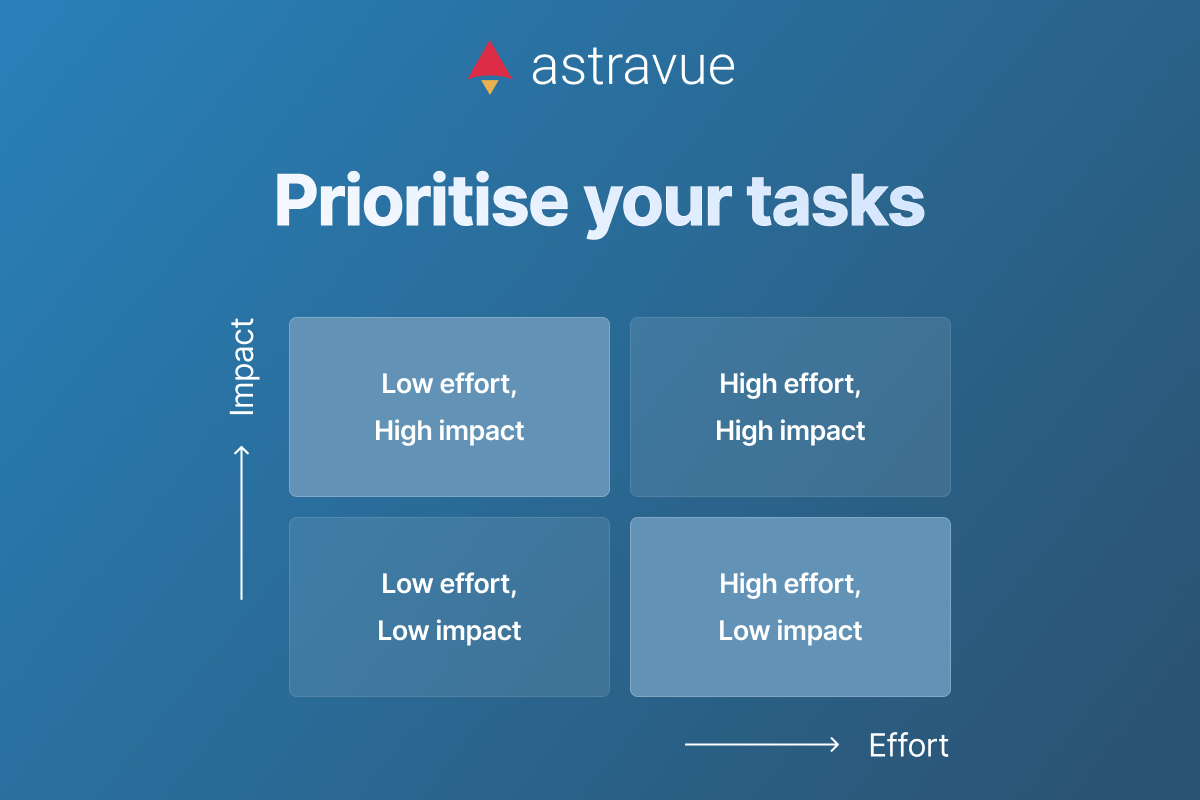No matter how you manage your projects—Agile, Waterfall, Kanban, or any other method—knowing which tasks to tackle first is crucial for effective project management. Proper prioritization reduces stress, minimizes wasted time, and leaves room for completing other tasks.
In just five minutes, you’ll learn two simple methods to master prioritization in project management, ensuring you complete your work quickly and on time.
The Importance of Prioritization in Project Management
We often feel like every task is urgent and needs immediate attention, as if the world might end if we don’t get it done. However, 99% of the time, not everything is urgent. But there are always tasks that are more important, more urgent, or both, especially in project management.
Method 1: The Impact-Effort Matrix
In any project, some tasks significantly impact your results, while others require a lot of work but seem to have little impact. For example, testing a ten-thousand-line script before release has a high impact. In contrast, conducting a sustainability assessment for your office might take weeks to complete but have little immediate impact.
Both types of tasks are essential for your project’s success, so how do you choose between them? Start by assessing how much effort each task requires—consider the hours, the number of people involved, and the tools needed. Then, map your tasks onto the Impact-Effort Matrix.
Visualize Your Tasks:
– High Impact + Low Effort: These are easy wins. Prioritize these to make quick progress and keep everyone happy.
– High Impact + High Effort: These are significant undertakings that require careful consideration. Assess whether the reward justifies the effort.
– Low Impact + Low Effort: These tasks are fillers that don’t take much time but may still be necessary.
– Low Impact + High Effort: These tasks are often time-consuming and energy-draining, like daily reviews or long meetings. Minimize these where possible.
Quick Tip: If you find yourself overwhelmed by low-impact, high-effort tasks, check out our project management tool to streamline your workflow and avoid unnecessary stress.
Method 2: The MIT (Most Important Task) Method
Another powerful prioritization technique in project management is the MIT Method, which stands for “Most Important Task.”
This method involves identifying the 2-3 most critical tasks for the day—tasks so important you can’t end the day without completing them.
How to Prioritize Your MITs:
1. Start with a Morning Routine: Review your to-do list first thing in the morning.
2. Identify Your MITs: Choose 2-3 tasks that are absolutely essential.
3. Move Them to the Top: Make sure these tasks are your top priority.
4. Complete Them First: Tackle these tasks at the start of your day for a productivity boost.
Take Action Now
Now is the perfect time to revisit your projects and to-do lists and prioritize using the Impact-Effort Matrix and the MIT Method. By doing so, you’ll ensure that you’re focusing on what truly matters in your project management journey and getting your work done efficiently.
Enjoyed this article? Subscribe below for more tips on boosting your productivity and achieving better outcomes with your projects.
P.S. If you’re looking for a tool to streamline your task management and get into action quickly, check out Astravue [here].




